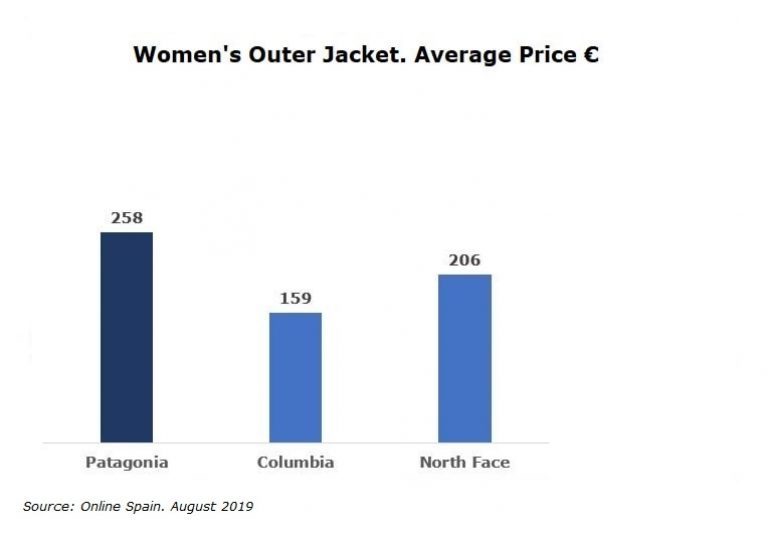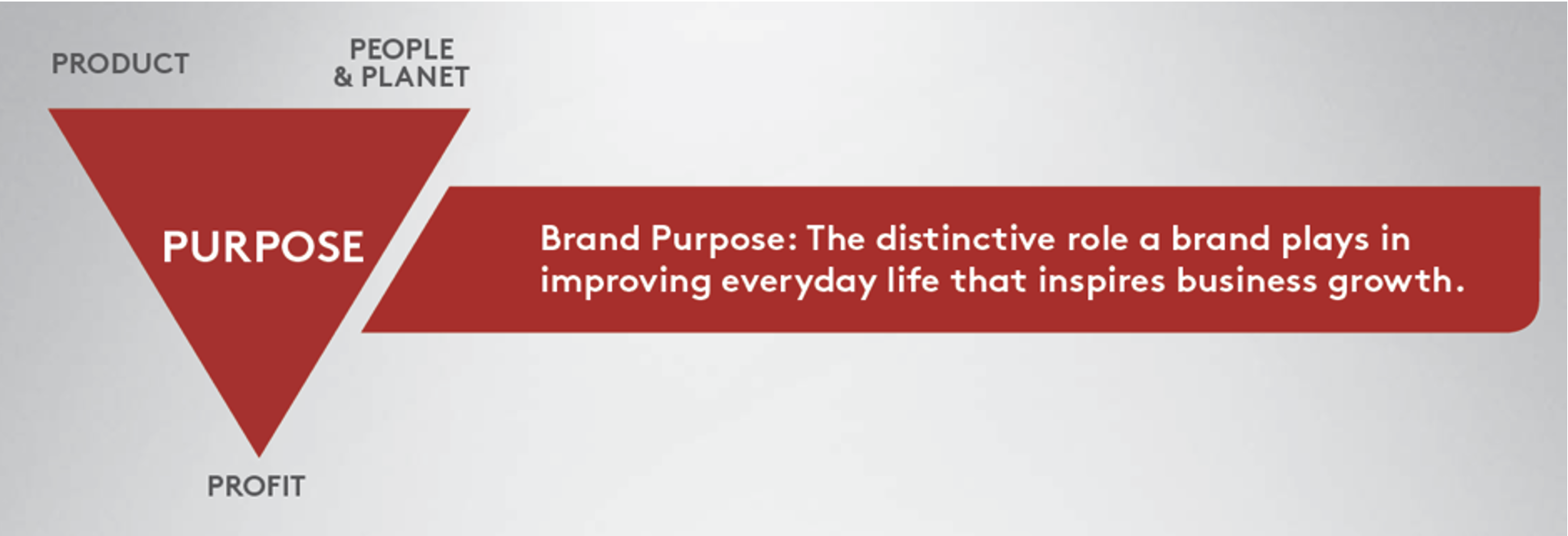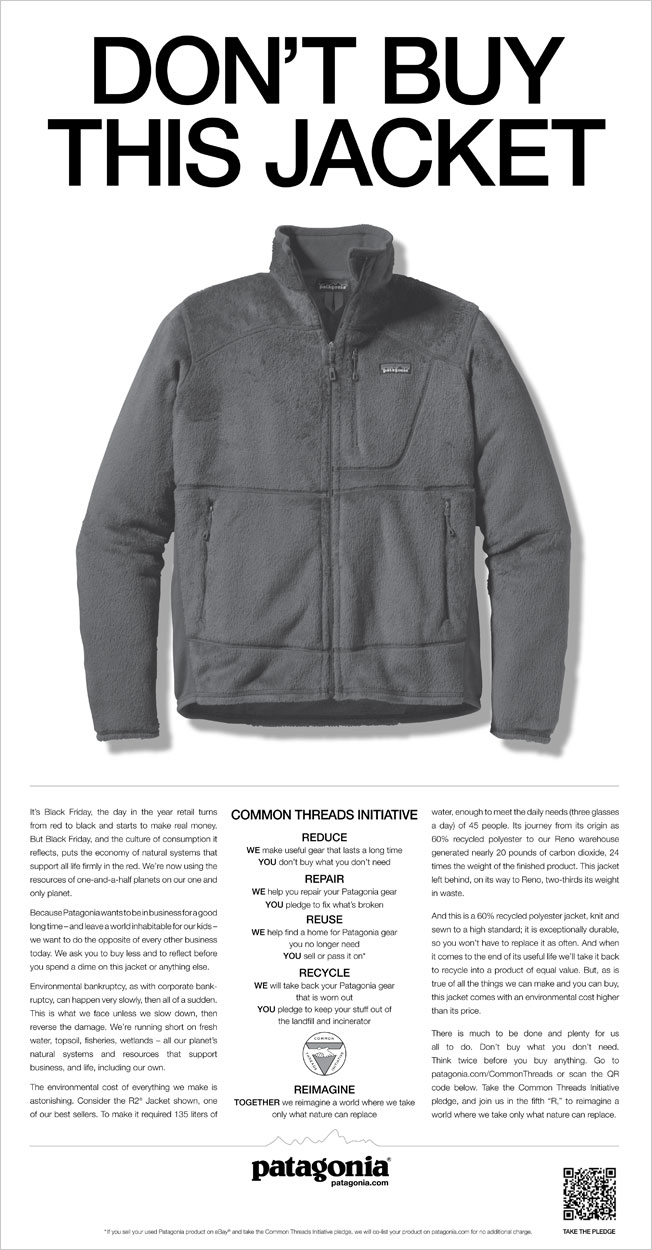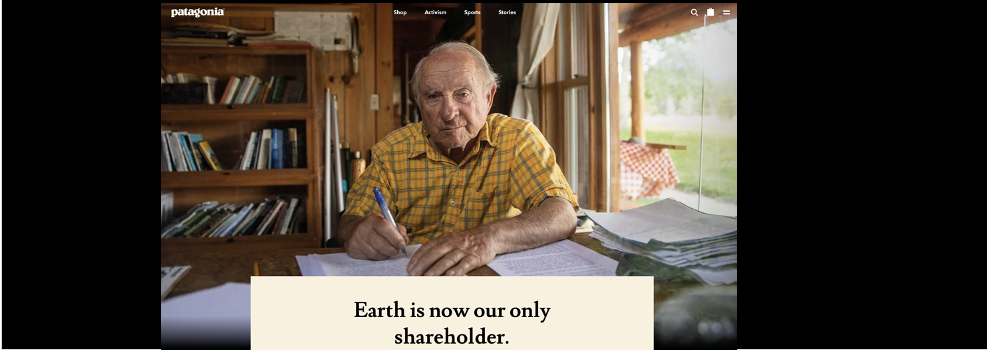Linked In this week was full of marketers applauding Patagonia for handing the company to a trust tackling climate change. The Chouinard family has split its shareholding between two new entities: 1. Patagonia Purpose Trust will oversee the company’s strategy and hold the 2% of stock with voting rights, 2. Holdfast Collective will be responsible for the company’s economic interest and hold the remaining 98% of non-voting stock, distributing an annual dividend from any cash not reinvested in Patagonia (1). This latter sum is expected to be a hefty $100 million per year.
This is an admirable and impressive move. But how relevant is it for marketers working in the real world for more conventional companies?
In this post, I suggest some practical steps marketers can take using inspiration from Patagonia.
1. PATAGONIA STILL FOCUS ON PROFIT
To be clear, the Patagonia business will continue to work to generate a profit. “This isn’t some kind of hippie-tie-dye-running-through-the-flowers thing,” commented the company’s chairman, Charles Conn (1).
Indeed, the way Patagonia can make the biggest positive impact on the environment is by being as profitable as possible.
Furthermore, it was running Patagonia as a conventional, profit generating company for 39 years that has allowed founder Yvon Chouinard to now “give away all company profits to ‘fight environment crisis’”, as The Times reported (2). The company almost doubled revenue between 2013 and 2017 to $1billion (3), helping Chouinard accumulate a reported net worth of $1.2billion (1), dwarfing the sum of money donated to environmental groups of $89million (1).
2. PATAGONIA MAKES GREAT PRODUCTS
Clearly sustainability is a big part of Patagonia’s appeal. But sustainability alone is not enough to keep consumers buying, especially given Patagonia’s premium pricing (see below). Only 10% of consumers claim to chose a brand on sustainability alone, according to our brandgym research. Creating brilliant products is also key to long-term success, with product still playing a key role in brand purchase for 90% of consumers (38% product alone and 52% in conjunction with sustainability).

This is why brand purpose, in our view, should be rooted in making great products, not just focused on people (societal change) and planet, to ultimately drive profit. The visual below summarises this product-centric approach to defining brand purpose. The brand purpose that fulled Patagonia’s growth was consistent with this approach:
To Build the Best Product with No Unnecessary Harm.

3. PATAGONIA USE STORYDOING, not just STORYTELLING
Our brandgym research shows that the number one success factor for brand purpose is to drive it through the whole business. And this means using storyDOING, not just storyTELLING, to deliver their brand purpose, like Patagonia.
The famous “Don’t Buy this Jacket” ad (below) promotes some of the services Patagonia provide as part of their storyDOING. This includes repairing clothing items to help prolong their life. The company repaired more than 100,000 garments in 2020 (2).
Note, however, that the very first line of the Common Threads Initiative is related to the core product: “We make useful gear that lasts a long time.” The genius here is that this message delivers a double whammy. It helps promote the idea of being more sustainable by reducing consumption and waste. BUT it also communicates the idea of being a durable, high quality product. This is an example of replacing an “and” with a “because” to be more single minded as a brand: “High quality BECAUSE its more sustainable”.

4. PATAGONIA LINK SUSTAINABILITY INITIATIVES TO THEIR PRODUCT
Patagonia is a good example of a brand where sustainability initiatives are closely linked to the core product, as explained above. Hellmann’s is another example we posted on here. The brand’s #maketastenotwaste campaign inspires and helps people use Hellmann’s mayonnaise and sauces to turn leftover food into tasty meals. This helps the planet whilst also promoting the core product. And if its your own company, do this successfully for long enough and maybe one day you can follow Yvon Chouinard’s example and make earth your only shareholder.
In conclusion, the practical way to take inspiration from Patagonia is to root your brand purpose firmly in your core product. Use it to help create great products, not just sustainability initiatives, to drive profitable growth.
To get our latest paper on brand purpose and how to make it pay, just pop your email in the form below.
To explore making BRAND PURPOSE pay in more depth we offer a short, on-demand course on our brandgym Academy platform here. The course is only £95+VAT and is fully refunded if you go on to take the full Mastering Brand Growth program, with details on the 2023 edition here.
SOURCES
